
Chateau Calon Segur Wines
In the northernmost tip of Bordeaux’s Saint-Estephe appellation, close to Chateau de Pez, a thick, smooth, gently-rounded stone wall winds its way around a 136-acre vineyard, all in one piece. Almost...Read More

In stock. Available for pick-up at store

In stock. Available for pick-up at store
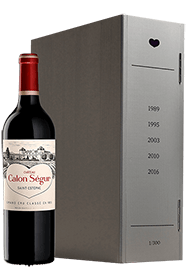
In stock. Available for pick-up at store

In stock. Available for pick-up at store

In stock. Available for pick-up at store

In stock. Available for pick-up at store

In stock. Available for pick-up at store

In stock. Available for pick-up at store

In stock. Available for pick-up at store

In-Stock

Pre-arrivals – 2 to 4 months delivery

Pre-arrivals – 2 to 4 months delivery

Pre-arrivals – 2 to 4 months delivery

Pre-arrivals – 2 to 4 months delivery

Pre-arrivals – 2 to 4 months delivery

Wine Futures – delivery in early 2027

Wine Futures – delivery in early 2027
Chateau Calon Segur | A Heart-Shaped Saint-Estephe 3rd Growth
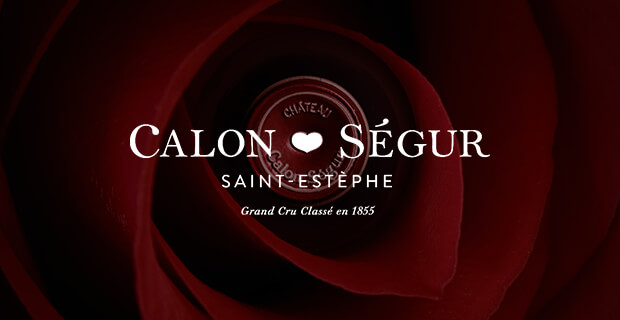
The History of Chateau Calon Segur, the Great Love of the Marquis de Segur
One of the oldest properties of the Medoc region, Chateau Calon Segur dates back to the Gallo-Roman era. Archives from Bordeaux University have shown that the estate paid taxes on wine production as early as the 12th century. The first part of the chateau’s name comes from the word “calones,” which refers to small river skiffs used to navigate the Gironde estuary during the Middle Ages.
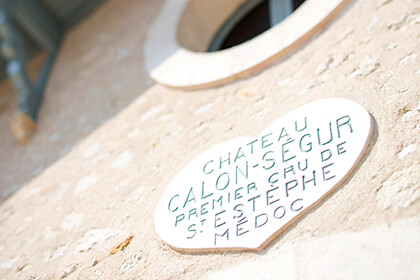
The second part was added in honor of the Marquis Nicolas-Alexandre de Segur, who acquired the estate in the 18th century. Owner also of Lafite, Latour and Mouton, the Maquis de Segur was one of the most influential characters in Bordeaux’s history, nicknamed “the Prince of Vines” by Louis XV. His love for “Calon” is perfectly expressed by a sentence that has since shaped the estate’s history: “I make wine at Lafite and Latour, but my heart is at Calon.” This quote has since inspired the identity of the chateau, symbolized by a heart engraved on the stone façade of the cellars in the 19th century and pictured on the label of the estate’s wine since the beginning of the 20th century.
Following the death of the Marquis in 1755, the property changed hands between the Dumoulin family and Firmin de Lestapis. The 55-hectare (136-acre) estate was already regarded as one of the top wine producers of the Saint-Estephe appellation and was classified as a Third Growth in the famous 1855 Classification of the Medoc and Graves. In 1894, Georges Gasqueton and Charles Hanappier acquired the Chateau Calon Segur, which would stay in the Gasqueton family for over a century. During this time, the family carried out a major renovation projects both in the cellars and out in the vineyard, starting in 1995.
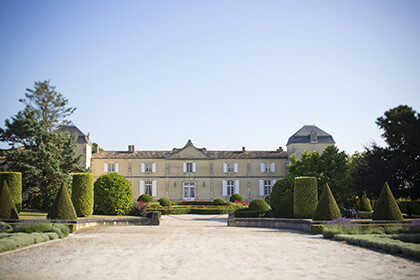
Following the death of Madame Denise Gasqueton, the property was acquired by Suravenir, a subsidiary of the insurance company Credit Mutuel Arkea, in 2012. Since then, major investments have resulted in a new vat cellar and barrel room, inaugurated in time for the 2016 harvest. The vineyard was restructured and a replanting project launched, with pride of place given to the estate’s flagship grape varietal, Cabernet Sauvignon. The estate’s picturesque Chartreuse, whose origins still remain a mystery today, was also restored and new life breathed into its majestic gardens.
In the Walled “Eternal” Vineyard of Chateau Calon Segur
The most northerly of all the Medoc Classified Growths, Chateau Calon Segur is situated in the Saint-Estephe appellation on the Left Bank of Bordeaux. The Chateau Calon Segur vineyard is truly unique in that its vineyard of 55 hectares (136 acres) has remained in one piece since the 1855 Classification, a consistency of terroir that is difficult to find in Bordeaux these days. The vines are planted in a single block around the Chartreuse, surrounded by a thick, gently-rounded stone wall originally built in the 18th century. Stretching over 1,200 meters (3,937 feet), this wall has remained an unchanging feature of the estate and has helped forge the identity of Chateau Calon Segur.
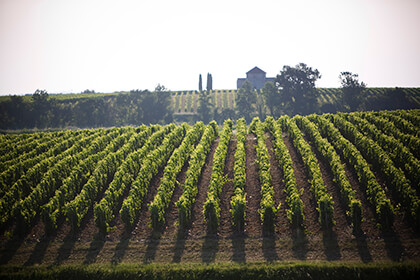
The vineyards of Chateau Calon Segur are established on three outcroppings of gravel. The terroir here is characterized by a thick layer of easy-draining gravel soil, originally deposited by the Gironde during the Quaternary Era, over a subsoil made largely of clay and formed during the Tertiary Period. The topsoil features a fine layer of Lacustrine clay. This combination of gravel and clay soils is credited for the beautiful balance of power and elegance in the wines of Calon Segur.
Today, the vineyard is planted with 56% Cabernet Sauvignon, 35% Merlot, 7% Cabernet Franc and 2% Petit Verdot, with the vines aged 22 years on average. The goal of the vineyard team is to have Cabernet Sauvignon represent 70% of the total plantings by 2032. Each new year, this variety is replanted at high density, roughly 10,000 vines per hectare. The true flagship of the estate (sharing the same initials), Cabernet Sauvignon has, for over a decade, represented three-quarters of the final blend in the chateau’s First Wine, and up to 90% in some of the most successful vintages.
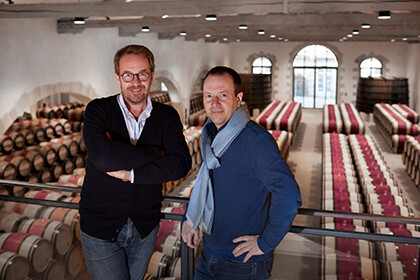
The vineyard team at Chateau Calon Segur has adopted an environmental management system (SME) aimed at reducing the estate’s impact on the natural environment. This sustainable approach to viticulture has resulted in the optimization of water and energy resources, the management and recovery of waste and effluents, and improvements in working conditions, among many other benefits.
SME is coupled with precision viticulture, which relies on tools like satellite imagery to fine-tune the treatment of the vines on an individual basis. The vineyard pathways are planted with cover-crops and some parcels are left to lie fallow as a way to encourage greater biodiversity in the vineyard ecosystem. In fact, at any given time only 45 hectares of the total 55 hectares are actively in use to produce wine. All these efforts have earned Chateau Calon Segur the ISO 14001 and HVE 3 certifications.
Patient and Gentle Winemaking at Chateau Calon Segur
Following a manual harvest, the grapes arrive to the harvest reception platforms on the upper part of the two-story winery, designed with gravity-flow winemaking in mind. Here they are de-stemmed, hand-sorted and cooled to 12°C before being filled into the vats on the lower level using gravity flow (no pumps). The Chateau Calon Segur winery is home to a collection of 75 stainless steel vats, ranging in size from 5 to 120 hectoliters to allow for very precise plot-by-plot winemaking. Pre-fermentation maceration and cold soaking takes place for 18 to 21 days before alcoholic fermentation can begin.
Forever in search of finesse in the wines, the Calon Segur team has abandoned the traditional punch-down techniques (pigeage) and has applied more moderate pump-overs (remontage) during the winemaking process. Combined with the complete absence of pumps, these techniques have allowed for a greater preservation of the fruit’s integrity, resulting in wines that are purer, softer and more balanced in style.
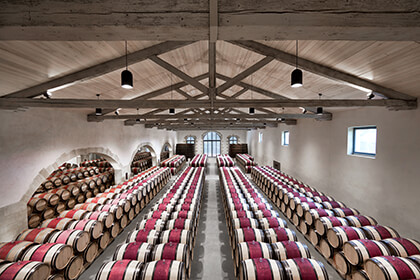
The Chateau Calon Segur first-year barrel room holds 1100 barrels, where the wines spend the first phase of their maturation process. Hidden inside two large casks are a set of stairs and barrel lift leading down to the second-year barrel room. Both levels are equipped with strict temperature and humidity control, allowing the winery team to closely monitor the maturation process. Situated 35 meters underground, between the vat room and aging cellars, a gallery holds the greatest treasures of the estate, a collection of old vintages beautifully preserved over time.
The namesake Grand Vin (First Wine) of Chateau Calon Segur is matured for a period of 18 months to 20 months in 100% new French oak barrels. Meanwhile, the estate’s Second Wine, Le Marquis de Calon Segur, spends 17 months in oak (30% of which is new) and the Third Wine, Saint-Estephe de Calon Segur,spends 16 months in 3-year-old barrels. The wines are fined traditionally using egg whites.
Fine-Tuning the Style of Chateau Calon Segur
While historically the wines of Chateau Calon Segur have been known as sturdy and masculine, with big, brawny shoulders and concentrated tannins that took decades to soften, the estate style began to evolve in the past decade under the direction of chateau Manager Laurent Dufau and Technical Director Vincent Millet. While the structure and body in these wines have been maintained, Calon Segur today offers a more elegant, balanced, fine-tuned expression of its great Medoc terroir through noble Cabernet Sauvignon that is granted ever greater pride of place.
The Chateau Calon Segur Grand Vin is a pure expression of its terroir of origin, combining a certain volume and intensity with the elegance of Cabernet Sauvignon from Medocain gravel soils, all in perfect balance. A deep garnet-purple in the glass, this Saint-Estephe reveals warm black fruit (black cherries, cassis and blackberries), along with touches of black licorice, red roses and molten dark chocolate. On the palate, it packs a medium body with great concentration, which thins out very slowly and gradually on a long, slightly spicy finish. Pair this bold and beautiful Saint-Estephe with a hearty stew of wild boar and root vegetables, a slow-cooked leg of lamb or beef filet served with wild mushrooms.
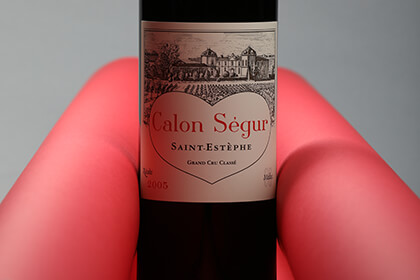
The estate’s Second Wine, Marquis de Calon Ségur, is a fantastic introduction to the estate’s style in a wine that is ready to drink at a younger age. With slightly more Merlot in its blend than in that of its older brother, this Saint-Estèphe offers a rich bouquet of jammy, syrupy black fruit (chocolate-covered cherries and black raspberries), along with floral touches of violet and earthy hints of underbrush. On the palate it is delicately firm with silky tannins and a fresh, layered black fruit core leading to a fragrant finish.
Chateau Calon Segur also makes a Third Wine called Le Saint-Estephe de Calon Segur, a fresh, fruity and dynamic red made from the younger vines of the estate.